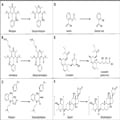Abstract and Introduction
Abstract
The human microbiome consists of diverse bacteria, fungi, protozoa, and viruses that can influence or be influenced by orally ingested medications. Microorganisms within the gastrointestinal tract, in particular, can activate, inactivate, or modify oral medications into toxic metabolites, leading to alterations in drug bioavailability, which could impact patient care. Pharmacomicrobiomics, a relatively new science involving interactions between the microbiota and medications for disease treatment, could be crucial for understanding the variability in patient responses to these drugs. Certain gut microbes specifically affect the pharmacokinetics of a number of common cardiovascular drugs. An exploration of the complex relationship between the gut microbiome and cardiovascular drugs will promote a path toward greater personalization of medication therapy to achieve positive health outcomes for all patients.
Introduction
So small that they are invisible to the naked eye, microorganisms are present on almost every part of the human body, including the gastrointestinal tract, skin, and lungs. These microbiota are often referred to as the "invisible organ" because they are partially responsible for digestion, vitamin synthesis, defense against pathogens, and other beneficial effects. A healthy microbiota—comprising more microbial cells than the human body it inhabits—contains a wide variety of diverse bacteria, fungi, protozoa, and viruses, and its composition is shaped by every aspect of life, including geography and diet.[1] Although knowledge of the microbiota that comprise the human microbiome dates back to the mid-1880s, systematic studies of microbe-host relationships were not conducted until relatively recently, following the proliferation of new genomic-analysis technologies. One of these emerging fields of study, pharmacomicrobiomics, explores the interactions between a person's microbiota and medications for disease treatment.[1]
It has been demonstrated that the gut microbiome, in particular, can influence or be influenced by many commonly prescribed drugs.[2] Orally administered medications travel the length of the digestive tract before reaching the intestines, where they are ultimately absorbed into systemic circulation. As shown in Figure 1, microorganisms within the gastrointestinal tract can activate, inactivate, or even modify oral medications into toxic metabolites, leading to alterations in drug bioavailability that could impact patient care.[3–8] Commonly used medications also impact the abundance and diversity of the microbiome, consequently affecting digestion, vitamin synthesis, and more.
Figure 1.
Modifications to Orally Administered CV Drug Moieties by Gut Microbiota
The microbiota is known to affect the pharmacokinetics of many common cardiovascular drugs. The Western diet, which is typically high in processed foods, tends to increase a patient's risk for developing cardiovascular conditions; additionally, it is directly associated with dysbiosis, or disruption of the normal gut microbiota.[9] Owing to the prevalence of the Western diet, dysbiosis, and cardiovascular disease, cardiovascular drugs have consistently been some of the most commonly dispensed medications in the United States. Therefore, knowledge of the pharmacomicrobiomics of cardiovascular drugs could be crucial for understanding the variability in patient responses to these medications.
US Pharmacist. 2023;48(2):18-22. © 2023 Jobson Publishing














